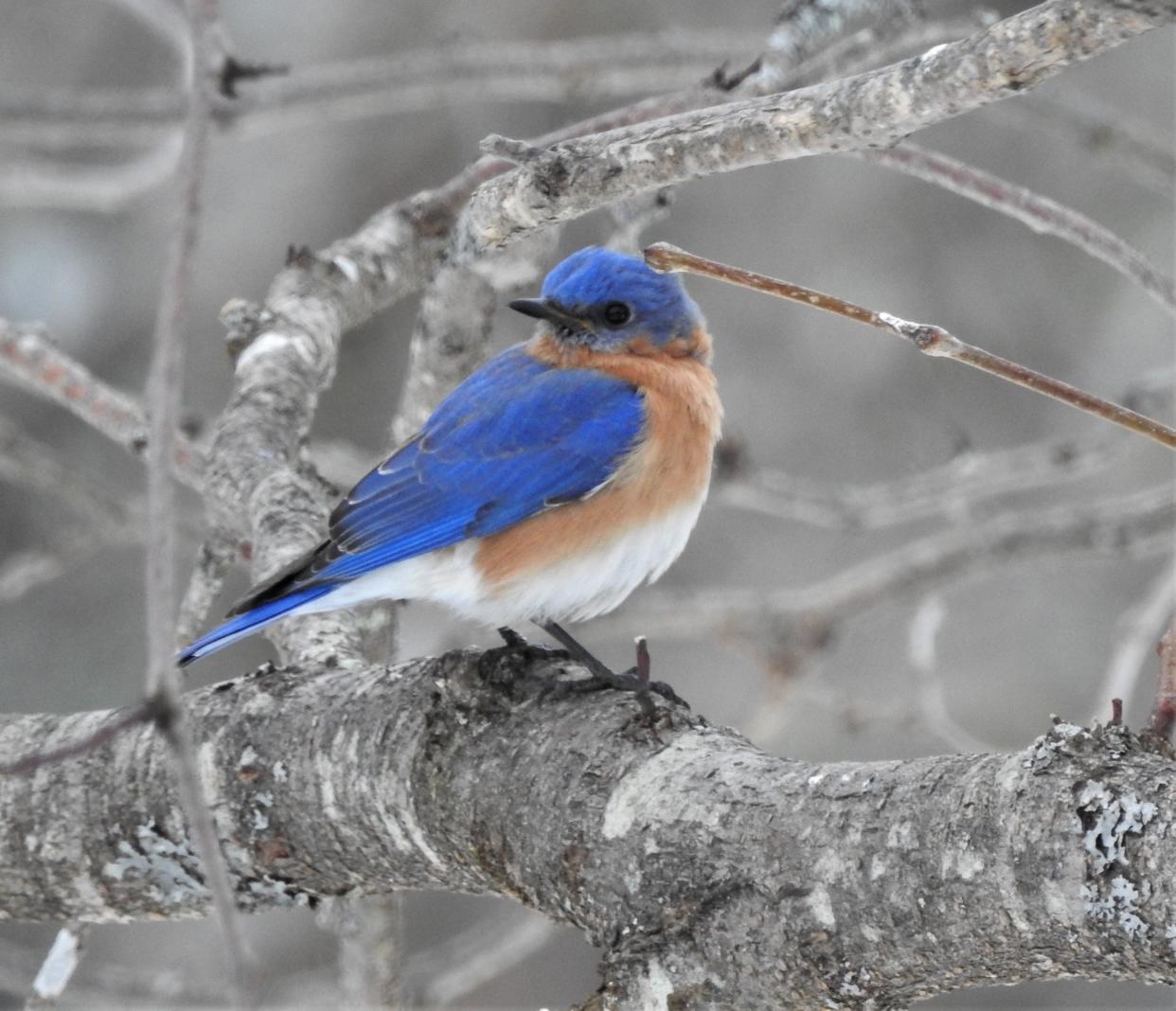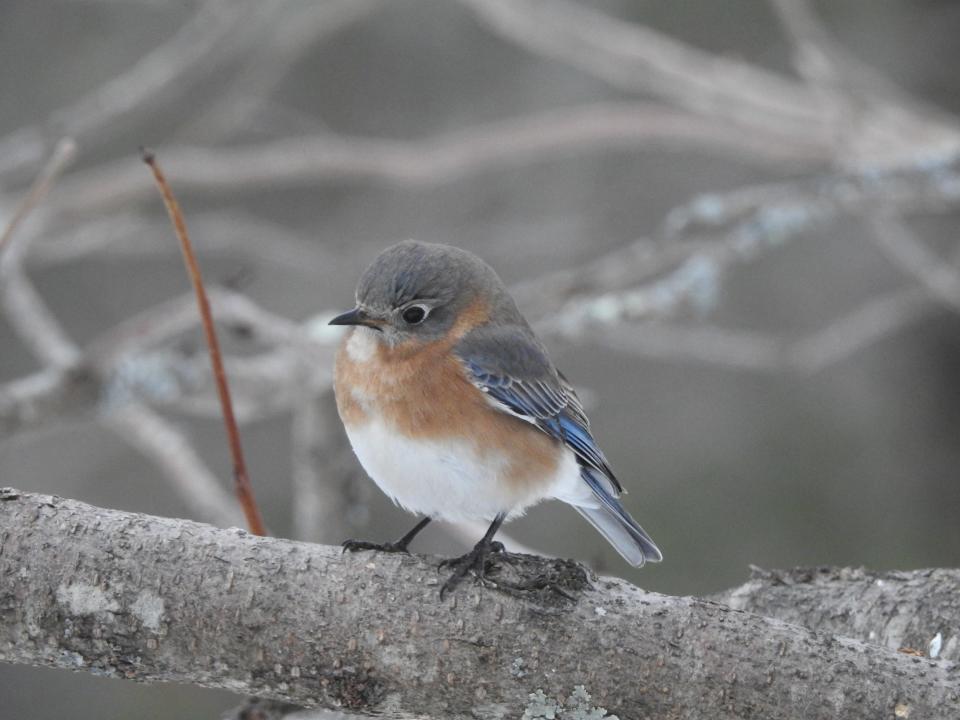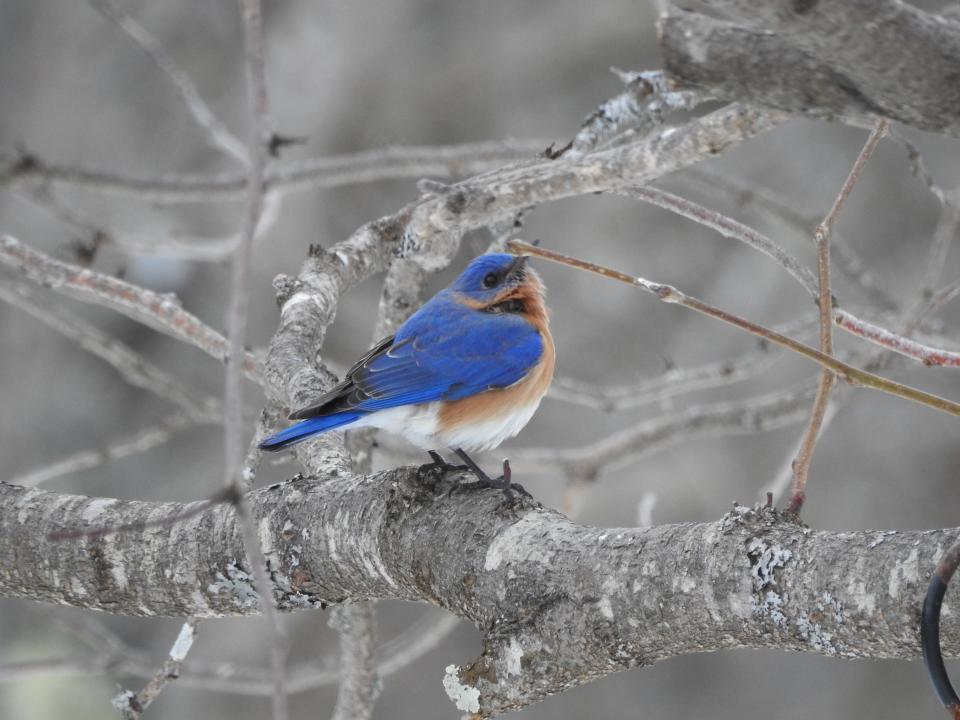How to prepare your nesting boxes for bluebirds: Nature News

We have a large group of house sparrows that have taken over our front yard, especially the huge quince that provides thorny protective cover. I don’t particularly begrudge the house sparrows their success in colonizing our front yard, as a human, who am I to point fingers?
But, they are doing it at the expense of the bluebirds, this I do mind.
This week, being the first week of spring, is when I want to see bluebirds coming back and checking out our many birdhouses that we have placed in locations meant to woo these winsome creatures. Unfortunately, this same week, I have been watching house sparrows move into birdhouses traditionally used by bluebirds. This is one of the ways the house sparrows get the upper hand; move in early and establish territory before the bluebirds are even thinking about nesting. The pair of bluebirds that hang out at my feeder are still, to my eye, in the early stages of courtship.
I think of bluebirds as a sign of spring, but are they? With spring comes that quickening of life that right now seems to be lurking under the remaining cover of snow: the morning chorus of birdsong spilling through an open window, male goldfinches changing their drab winter colors for bright gold, sure to attract a mate, spring flowers pushing up through the snow, flies buzzing around the skunk cabbage down in the swamp, chipmunks up and about after their winter torpor, and, migratory birds returning from places south. Red-winged blackbirds and huge flocks of grackles just showed up at my feeder, stopping for a snack on their way north. But the bluebirds — they used to be migratory — now they stay all winter. If you look at the Christmas Bird Counts for Maine, the increase is dramatic, especially in the last 15 years, in which time the number of bluebirds counted in December has shot up from the 10s to the 100s.

There are a number of factors that have probably contributed to the increase in bluebirds (both in summer and winter) in our area. According to the Cornell Lab of Ornithology they like open country with patchy vegetation and large trees or nest boxes. They probably wouldn’t have loved pre-colonial New England with all its forest, but suburbs on the other hand, are prime habitat, especially when you combine lawns and fields with bird feeders in winter and nest boxes in summer. In addition, as our climate warms and our seasons change, southern species are expanding north. The Audubon Society has wonderful interactive maps (go to audubon.org and click on the ‘climate vulnerability’ tab) that show current range versus the future range under different warming scenarios. In all of these scenarios, bluebird range is moving north both in summer and winter.
What I wonder is how to help my pair of bluebirds nest in my yard. The two competitors for my bluebird nest boxes are house sparrows and tree swallows. House sparrows are a non-native species, introduced from Europe to New York in the 1800s and have expanded into most of North America ever since. They will out-compete bluebirds for nesting sites and can even kill the bluebirds! If you see house sparrow activity around a nesting box, clean out the nest before they lay eggs. If they keep coming back, plug the entrance hole until they lose interest. The Cornell Lab of Ornithology also suggests drilling a second entrance hole beside the first one (so that there are two separate but identical holes on the front panel) to enable bluebirds to better defend (bluebirds can be pretty feisty) the nest boxes from sparrows.

Tree swallows are a different kettle of fish. These are lovely, native birds that also should be welcome in our backyards …. think about all the flying insects they eat! One of the best ways to decrease competition for nest boxes between bluebirds and tree swallows is to pair nest boxes about 15-20 feet apart–tree swallows won’t nest that close to other tree swallows, but have no issues with bluebirds nesting right next door.
Despite the lingering snow, spring is here. It isn’t too late to clean out bird houses and ready them for the upcoming breeding season. But do this soon! As climate changes the timing of breeding seasons is changing, “spring” is happening earlier and earlier.

Susan Pike, a researcher and an environmental sciences and biology teacher at Dover High School, welcomes your ideas for future column topics. Send your photos and observations to spike3116@gmail.com. Read more of her Nature News columns online at Seacoastonline.com and pikes-hikes.com, and follow her on Instagram @pikeshikes.
This article originally appeared on Portsmouth Herald: Readying your nesting boxes for bluebirds: Nature News

